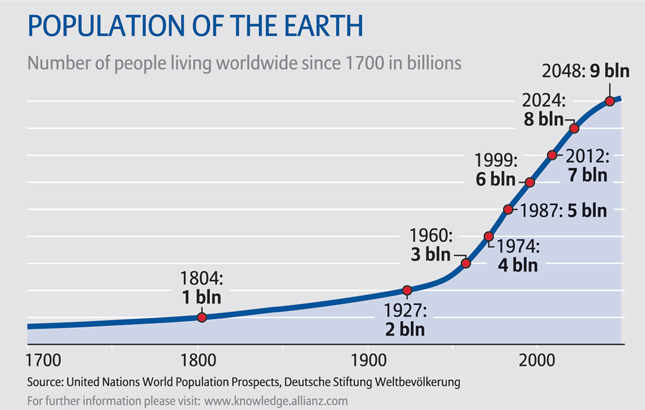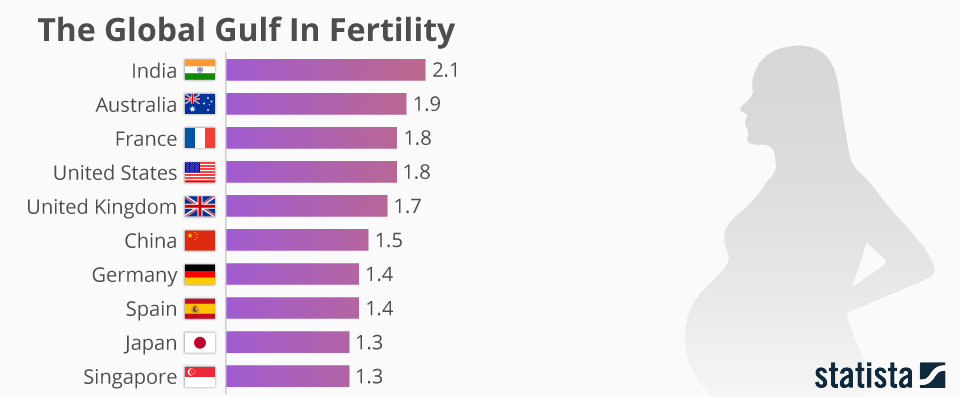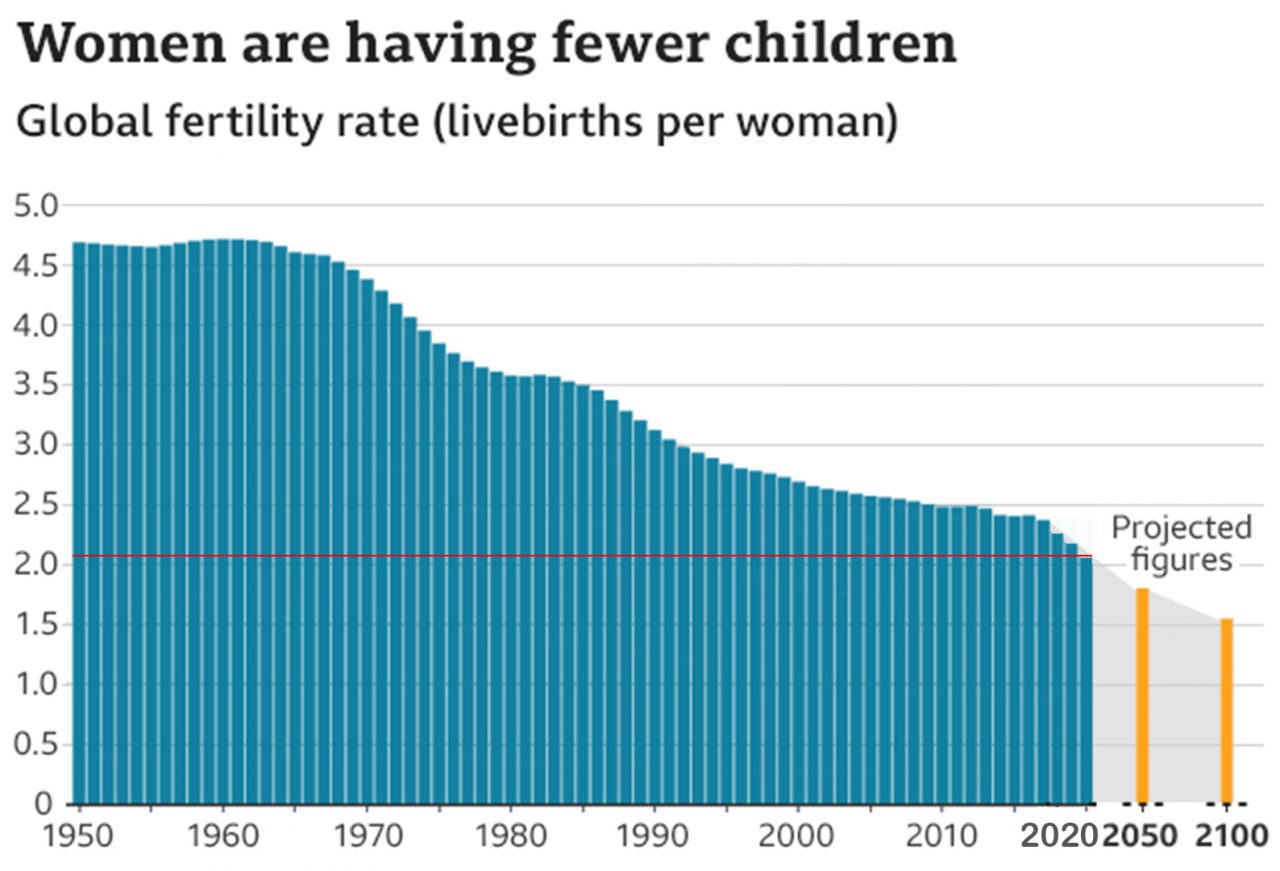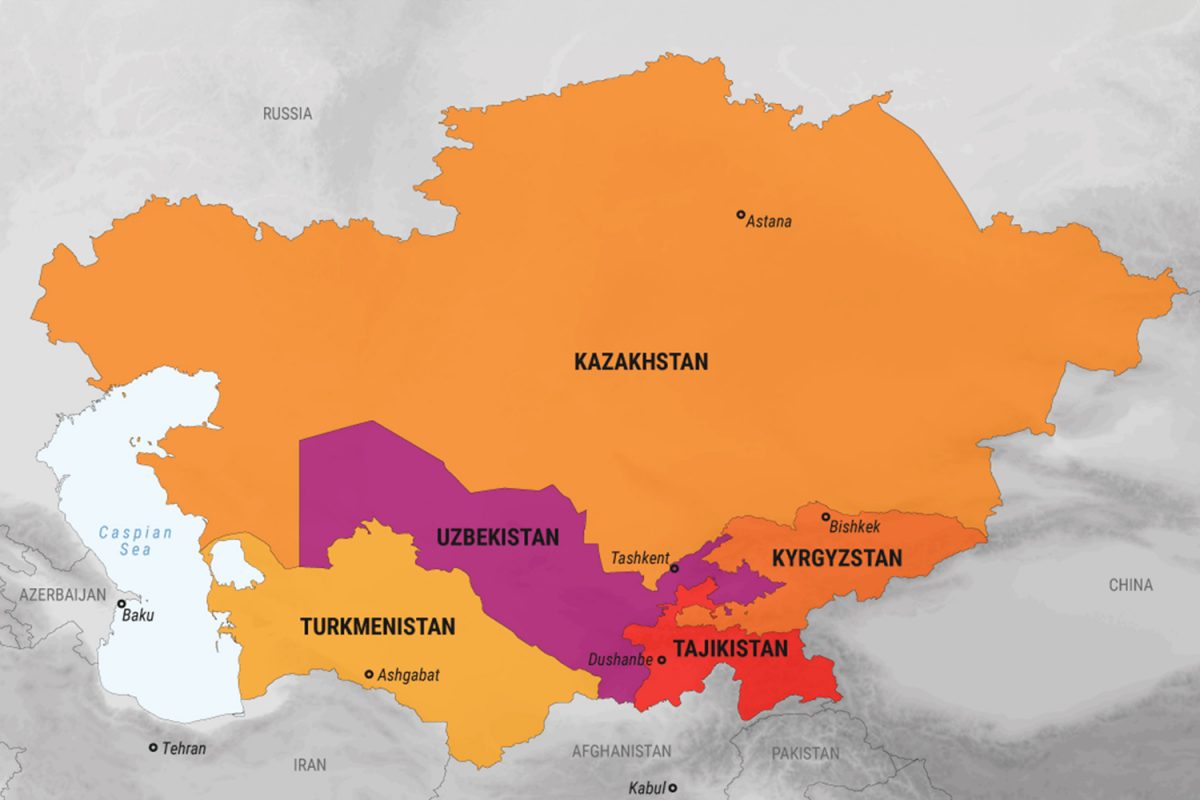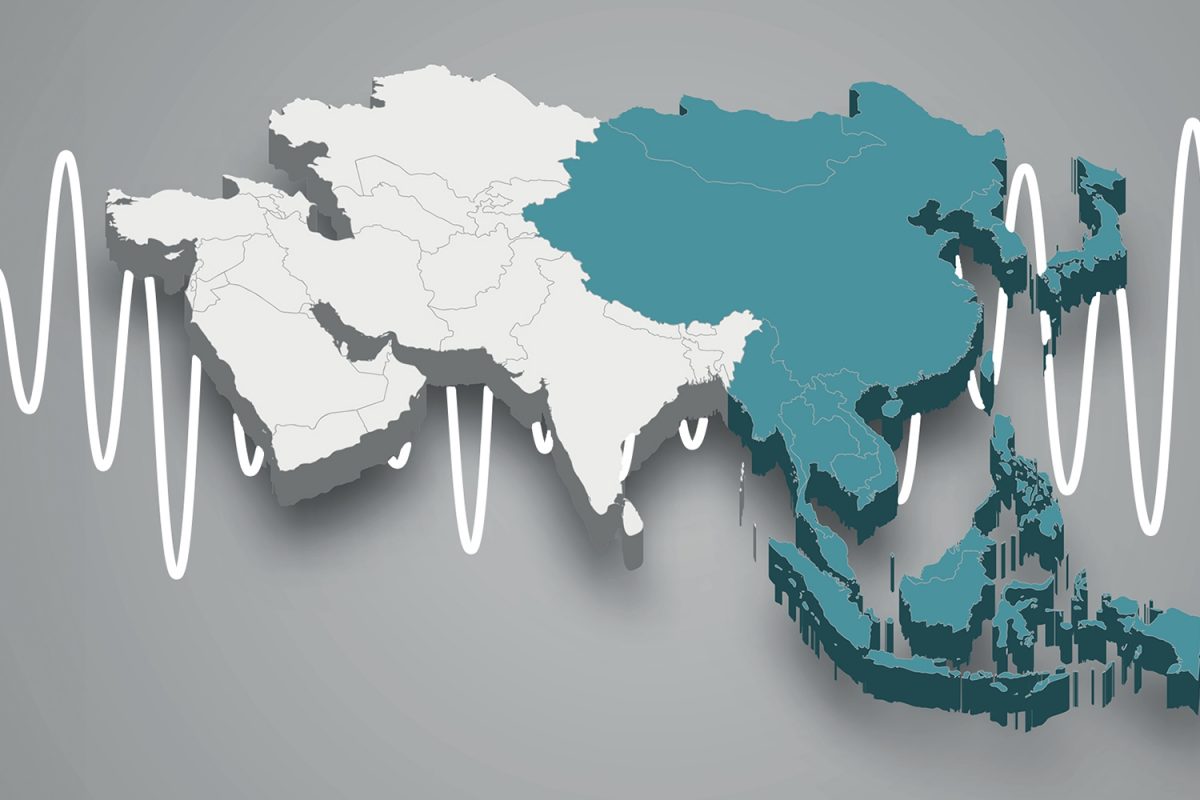All the research in the last few decades accepted that the world was facing a severe population explosion. Uncontrolled population growth would outstrip scarce resources and devastate the environment. More people would require more resources in the form of food and energy, which in turn would lead to a rise in global warming and other ecological catastrophes. But in the 21st century all over the world, countries are confronting population stagnation and declining fertility rates. Maternity wards are already shutting down in Italy. Ghost cities are appearing in China. Universities in South Korea can’t find enough students, and in Germany, hundreds of thousands of properties have been razed, with the land turned into parks.
The US and China published their census results in 2021, the data was collected during the pandemic throughout 2020. Both countries’ results sent shockwaves across the world. Both nations will most likely determine the 21st century and they both showed the slowest rates of population growth in decades. The implications go beyond the US and China as they are not the only nations showing slowing rates of population growth, with some nations such as Russia, Japan and Germany are already experiencing population decline.
Modern societies have long been structured around the notion that a surplus of young people will drive economies and help pay for the old. This was based upon the global population continuing to rise. It took the whole of recorded human history until 1804 to reach 1 billion people. The next billion was added in under 125 years. The next billion was added to the world’s population in just three decades by 1960. In the next 40 years to the eve of the 21st century the global population doubled from 3 billion to 6 billion people. 71 million people were added annually between this period. Not only did the population of the world grow, but the growth rate accelerated exponentially. In just the next two years the global population is expected to reach 8 billion people. A lot of this population growth was driven by just 30% of the global population in places such as sub-Saharan Africa, Nigeria and South Asia. However In half of the world’s population, the era of high fertility has already ended.
In the 21st century growth rates are not accelerating but falling. According to the UN, between 2000 and 2050 the population will continue to grow, but only by about 50%, halving the growth rate of the previous fifty years. In the second half of the century, growth rates are anything between 0-10%. The annual increase in world population is expected to be 57 million a year on average between 2000 and 2050. This is smaller than the 71 million people added annually between 1950 and 2000. At some point in the 21st century the colossal growth rates seen in the global population will cease to exist.
We already see change taking place in the developed nations. The declining birth rates have led to fewer younger workers to support the large increase in pensioners. Europe and Japan are experiencing this problem already. Many also assumed population growth might be slowing down in Europe, but the world’s total population will continue to grow because of high birth rates in the third world. But birth rates are plunging everywhere. The first world nations are on the bitter edge of decline, but the rest of the world is following right behind them. And this demographic shift will help shape the remainder of the 21st century.
Some of the world’s powers, like Germany and Russia, are going to lose large percentages of their population. Europe’s population today is 742 million people. The UN forecasts that by 2050 it will drop to somewhere between 557 and 653 million. The lower number assumes that women will average 1.6 children each. The second number assumes 2.1 children. In Europe today, the fertility rate per woman is 1.4 children. Even in countries long associated with rapid growth, such as India and Mexico, birth rates are falling toward, or are already below, the replacement rate of 2.1 children per family.
South Korea’s fertility rate dropped to a record low of 0.92 in 2019 — less than one child per woman, the lowest rate in the developed world. Every month for the past 59 months, the total number of babies born in the country has dropped to a record low.
That declining birth rate, coupled with a rapid industrialisation that has pushed people from rural towns to big cities, has created a two-tiered society. While major metropolises like Seoul continue to grow, putting intense pressure on infrastructure and housing. In regional towns it’s easy to find schools shut and abandoned, their playgrounds overgrown with weeds, because there are not enough children.
Japan’s Population Conundrum
Japan was for long the world’s largest economy after the US. After WW2, Japan established an economy based around high end electronic exports, with significant government intervention. The cooperation of manufacturers, suppliers, distributors, and banks in closely knit groups called keiretsu; the powerful enterprise unions and shuntō and the guarantee of lifetime employment (Shūshin koyō) in big corporations led to rapid economic development and Japan’s economic miracle. But all of this took place with Japanese working extended hours – 9.00am-9.00pm, all in order to contribute to Japan’s economic miracle, which left little time for relationships or family.
Japan’s census in February 2016 confirmed the hard reality long ago signalled by shuttered shops and abandoned villages across the country: the population was shrinking. Japan’s population stood at 127.1 million, down 0.7% from 128.1 million in 2010. The 947,000 decline in the population was the first since the once-every-five-years count started in 1920.
Unable to count on a growing market and labour force to power economic expansion, Japan faces severe problems given her birth rate of 1.4 children per woman. The population of Japan is forecast to fall to about 108 million by 2050 and to 87 million by 2060. The rate of population growth in Japan peaked in 1950 and has fallen continuously since 1975. By 2011 it had hit zero.
Nearly a third of all Japanese were over 65 years old in 2015. By 2050, almost 40% will be older than 65, according to projections by the National Institute of Population and Social Securities Research, Richard Katz of The Oriental Economist forecasts that by 2045 there will be 13% fewer workers per person in Japan. That means each worker would need to produce 13% more in terms of economic value to offset the decline and maintain current living standards.
Fertility
The critical number for fertility is 2.1 births per woman. This is the number of children that each woman must have, on average, in order to maintain a generally stable world population. Anything above that number and the population grows; anything below, the population declines. According to the UN, women had an average of 4.5 children in 1970. In 2000, that number had dropped to 2.7 children. This is a dramatic drop. The UN forecasts that in 2050, the global fertility rate will decline to an average of 2.05 births per woman. That is just below the 2.1 needed for a stable world population. The UN has another forecast, based on different assumptions, where the rate is 1.6 babies per woman. So the UN, which has the best data available, is predicting that by the year 2050, population growth will be either stable or declining dramatically.
The developed nations of the world consist of 44 countries. In these countries women currently have an average of 1.6 babies each, which means that populations are already decreasing. Birth rates in the middle tier of countries such as Mexico or Turkey are down to 2.9 and falling. Even the least developed countries are down from 6.6 children per mother to 5.0 today, and expected to drop to 3.0 by 2050. In the poorest countries, such as Bangladesh or Bolivia, the birth rate is also falling, but it will take most of this century to reach 2.1 births per woman.
There is no doubt that birth rates are plunging. The stunning collapse in fertility rates across the world is the biggest and least reported demographic story of the past few decades. The developed world is no stranger to falling fertility. With the exception of the postwar baby boom, birth rates have been in almost uninterrupted decline for more than a century. More recently, however, fertility has also declined throughout the developing world and at an extremely rapid pace. Iran, a country that evokes images of traditional family values, has undergone one of the fastest fertility declines on record. According to UN estimates, the average number of children born to each Iranian woman has fallen from 6.6 to 2.1 over the past 25 years.
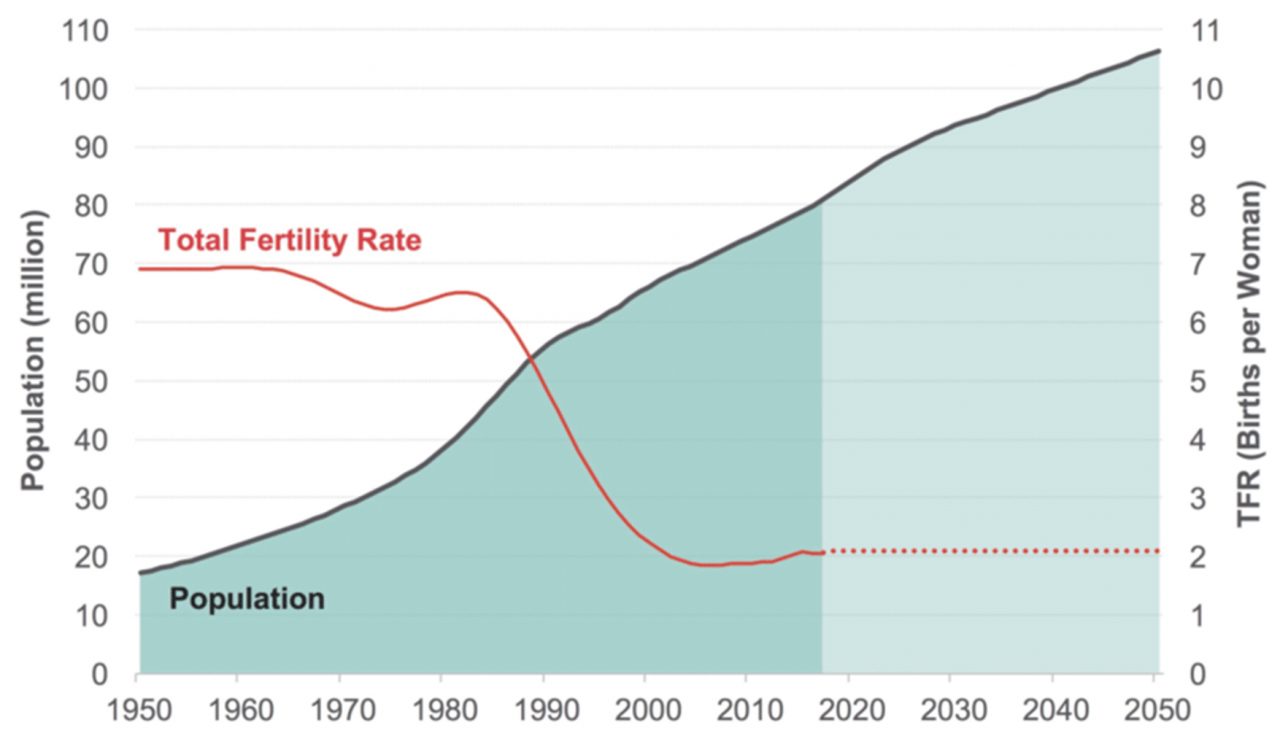
Why are women having fewer babies?
Before the advent of industrialization wealth to a large extent depended upon the number of children there were in a family. The more children the more workers or the more people that could work in the fields. This changed with the advent of factories that could use machines to churn out more goods than a labour worker could. The last two hundred years has seen more technological and scientific development than the whole of human history put together. Infants are no longer dying in large numbers before they reach the age of eight. Many illnesses that led to early deaths have been vaccinated against and as a result the world population grew at a colossal rate. The industrial and service needs of the global economy as well as more consumers to act as the lubricant for the global economy has seen the redefinition of the family unit, women and sexuality. The needs of the global economy, the need for consumers has led to the transformation of women and thus the family structure. Women no longer see their role as in the house to bear children but now as independent women who can pursue careers at the expense of having children and play a major role economically. The values of family and children have been replaced by individualism and a women’s economic value. Equality, feminism and LGBT have in many ways been the concepts that have been the death nail for the traditional family structure. The women being the child bearer, house maker and the husband being the breadwinner has been completely transformed today and this is reflected in the fall in fertility rates around the world.
Equality, feminism and LGBT have in many ways been the concepts that have been the death nail for the traditional family structure
Implications
The reduction in population growth and the spectre of population decline will have a major impact on the economy and politics. The population of each nation affects all aspects of national life. A lower population affects everything from the number of troops that can fight in a war to how many people there are in the workforce. The population of a nation affects how people live, and therefore how those countries behave.
Population decline will have major effects on global and national age structure. The world is set to get greyer as older people will outnumber younger people. Over 80s by the middle of the century will outnumber under 5s. This means the working population will need to fund a growing number of retirees, their healthcare and the impact this growing segment will have on consumption.
Shrinking populations also means declining working age populations. For a healthy economy those that retire need to be replaced with new workers. But as fertility rates drop the number of youth entering the workforce is set to be much lower than the number of retirees. A shrinking workforce has numerous economic implications. A shrinking workforce means less productivity, although this could be dealt with via automation. But it means less taxes for national governments which raises questions how national healthcare systems will be funded. A smaller workforce also means fewer consumers and basic services such as hotels, restaurants and shops will be hit. National governments will be forced to abandon some infrastructure projects and combine school districts, hospitals and even townships in order to maintain some level of economies of scale. It will be difficult for many nations to continue with their economic structure if the population is declining and this will see many shifts in the size of economies.
We will likely see competition over immigrants as the world’s population growth slows and eventually shrinks. Cheap labour, skilled labour and labour that can be easily trained will be competed for as they would be in short supply. Many countries have struggled with immigrants and many immigrants are facing persecution and discrimination in the West today.
Population decline will also lead to national challenges. The US has a birth rate for white women of around 1.9 per woman, meaning that the white population is contracting, but the African-American and Hispanic populations compensate for that. This means the US will likely maintain her population with the white population becoming a minority in the long run. While Europe is on track to lose roughly 65 million people by 2050, the US is on track to gain 100 million. Accompanying this growth gap will be a widening generation gap. By mid-century, the median age of Japan and most European countries could be well over 50, while the median age in the US will be 41. Going forward demography is increasingly leaning against the developed world. Back in 1950, all the major developed countries – Russia, Japan, Germany, the UK, Italy, and France – were among the world’s 10 most populous nations. In 2050, only the US will remain.
the US will likely maintain her population with the white population becoming a minority in the long run
Demographic challenges are usually tackled with immigration. The problem is that Japan and most European countries have severe cultural problems integrating immigrants. The Europeans have had particular problems with migrants from the Islamic world.
In Russia first-time mothers are being made eligible to receive maternity benefits previously paid only to women with two or more children. This is under proposals to raise Russia’s birth rate. Welfare benefits would also be paid for children aged three to seven in low-income families, and free school meals would be provided for the first four years of school. A one-off “maternity capital” payment, currently worth $7,600 , was introduced for families with two or more children in 2007 under a 10-year programme. But since 2017, the birth rate has started to fall again. Families stopped giving birth even to first children. Putin recognised that this problem could not be solved with money alone.
The other solution that could mitigate the problem of decreasing population would be continuing advances in technology to increase productivity, better known as automation or robotics, but despite significant developments in these areas, they are still a long way away from being able to solve the demographic problems the planet will be facing.
Muslim Demographics
Whilst growth rates are dropping across the world, in the Muslim world fertility rates have reduced over the past decades, but remain well above the replacement rate and this is why the Muslim world, from Indonesia to Morocco will continue to grow for the remainder of the 21st century. Muslims have more children than members of the other major religious groups. Each Muslim woman has an average of 3.1 children, significantly above the next-highest group (Christians at 2.7) and the average of all non-Muslims (2.3). In all major regions where there is a sizable Muslim population, Muslim fertility exceeds non-Muslim fertility.
The growth of the Muslim population is also helped by the fact that Muslims have the youngest median age (23 in 2010) of all major religious groups, seven years younger than the median age of non-Muslims (30). A larger share of Muslims will soon be at the point in their lives when people begin having children. This, combined with high fertility rates, will accelerate Muslim population growth.
After a century of explosive growth fertility rates have slowed and are projected to slow further from 2020. The population in the Muslim world until 2050 is only going in one direction and this is up, although the rate of growth is expected to slow. Going forward, there are few places in the world that will be subject to as much pressure from growing numbers of people as the Muslim world. This rising population will need to be watered, housed; they will need new and modern transportation systems and labour markets. Competition for jobs, especially government jobs, and housing and the poor quality and inadequate provision of public services are prime causes of the deep dissatisfaction with the status quo that marks so many of these societies. The stress these demographic pressures exert—and regional governments’ ability to mitigate them—will play a major role in determining the future trajectory of the Muslim world.
After decades of shouting wolf with overpopulation the world is in reality heading towards a demographic crunch. In a few decades we will be speaking about the lack of people, the lack of youth and the increase in pensioners. This will have serious implications for geopolitics, global power and economics.


